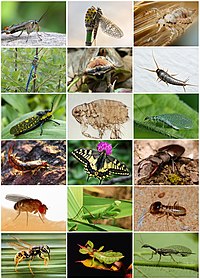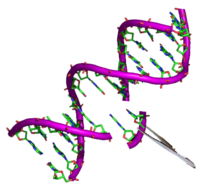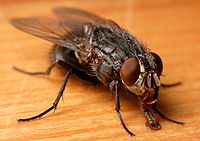
Effects of temperature on transcriptome and cuticular hydrocarbon expression in ecologically differentiated populations of desert Drosophila
Sign Up to like & getrecommendations! Published in 2017 at "Ecology and Evolution"
DOI: 10.1002/ece3.2653
Abstract: Abstract We assessed the effects of temperature differences on gene expression using whole‐transcriptome microarrays and cuticular hydrocarbon variation in populations of cactophilic Drosophila mojavensis. Four populations from Baja California and mainland Mexico and Arizona were… read more here.
Keywords: cuticular hydrocarbon; expression; effects temperature; host ... See more keywords

Genome and cuticular hydrocarbon‐based species delimitation shed light on potential drivers of speciation in a Neotropical ant species complex
Sign Up to like & getrecommendations! Published in 2022 at "Ecology and Evolution"
DOI: 10.1002/ece3.8704
Abstract: Abstract Geographic separation that leads to the evolution of reproductive isolation between populations generally is considered the most common form of speciation. However, speciation may also occur in the absence of geographic barriers due to… read more here.
Keywords: genome cuticular; hydrocarbon based; species complex; cuticular hydrocarbon ... See more keywords

Cuticular hydrocarbon pattern as a chemotaxonomy marker to assess six species of thrips
Sign Up to like & getrecommendations! Published in 2020 at "Journal of Asia-pacific Entomology"
DOI: 10.1016/j.aspen.2020.10.005
Abstract: Abstract Thrips constitute several families of slender insects with fringed wings and unique asymmetrical mouthparts. They have become globally important pests, infesting a variety of agriculturally important crops. Species of thrips are difficult to identify… read more here.
Keywords: chemotaxonomy; hydrocarbon pattern; hydrocarbon; cuticular hydrocarbon ... See more keywords

Dietary and Plasmodium challenge effects on the cuticular hydrocarbon profile of Anopheles albimanus
Sign Up to like & getrecommendations! Published in 2021 at "Scientific Reports"
DOI: 10.1038/s41598-021-90673-x
Abstract: The cuticular hydrocarbon (CHC) profile reflects the insects’ physiological states. These include age, sex, reproductive stage, and gravidity. Environmental factors such as diet, relative humidity or exposure to insecticides also affect the CHC composition in… read more here.
Keywords: cuticular hydrocarbon; chc profile; plasmodium; profile ... See more keywords

Consistency of Cuticular Hydrocarbon Mixtures of Five Reticulitermes (Blattodea: Rhinotermitidae) Taxa From Northern California: Similarity Among Colonies and Seasonal Variation
Sign Up to like & getrecommendations! Published in 2022 at "Journal of Economic Entomology"
DOI: 10.1093/jee/toac179
Abstract: Abstract Cuticular hydrocarbon (CHC) mixtures from workers of five distinct CHC phenotypes of Reticulitermes Holmgren 1913 from two locations in northern California were examined from monthly collections taken over a 3-yr period. The objectives of… read more here.
Keywords: northern california; cuticular hydrocarbon; chc; chc mixtures ... See more keywords

Geographical Variation of Cuticular Hydrocarbon Profiles of Adult Flies and Empty Puparia Amongst Three Populations of Calliphora vicina (Diptera: Calliphoridae)
Sign Up to like & getrecommendations! Published in 2022 at "Journal of Medical Entomology"
DOI: 10.1093/jme/tjac167
Abstract: Abstract Blowflies (Diptera: Calliphoridae) are of great importance in forensic entomology and in determining the minimum post-mortem interval, as they may be the first group of insects to colonize decomposing remains. Reliable species identification is… read more here.
Keywords: calliphora vicina; entomology; diptera calliphoridae; cuticular hydrocarbon ... See more keywords

Effect of antibiotic treatment and gamma-irradiation on cuticular hydrocarbon profiles and mate choice in tsetse flies (Glossina m. morsitans)
Sign Up to like & getrecommendations! Published in 2018 at "BMC Microbiology"
DOI: 10.1186/s12866-018-1292-7
Abstract: BackgroundSymbiotic microbes represent a driving force of evolutionary innovation by conferring novel ecological traits to their hosts. Many insects are associated with microbial symbionts that contribute to their host’s nutrition, digestion, detoxification, reproduction, immune homeostasis,… read more here.
Keywords: cuticular hydrocarbon; choice; antibiotic treatment; hydrocarbon profiles ... See more keywords